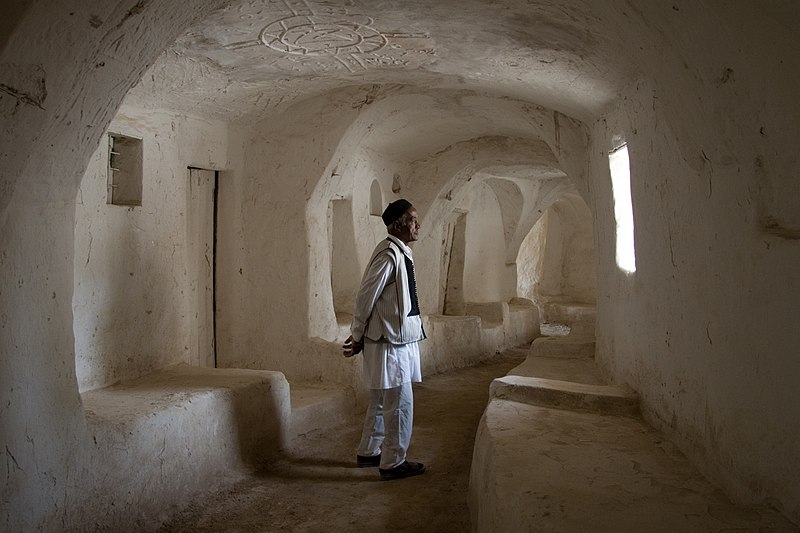Ghadames
There is an interesting place called "
Ghadames".
Ghadames or
Ghadamis (Arabic:
غدامس, Berber: ghdams / ɛadēməs; Libyan vernacular: ġdāməs) is an oasis town in the west of Libya. It lies roughly 549 km to the southwest of Tripoli, near the borders with Algeria and Tunisia. Ghadames borders Illizi Province, Algeria and Tataouine Governorate, Tunisia.
The oasis has a population of 7,000, mainly Berbers. The old part of the town, which is surrounded by a wall, has been declared a UNESCO World Heritage site. Each of the seven clans that used to live in this part of the town had its own district, of which each had a public place where festivals could be held.
HistoryThe first records about Ghadames date from the Roman period, when the settlement was known as Cydamus. In the 1st century BC the Roman proconsul Lucius Cornelius Balbus invaded Cydamus during the reign of emperor Augustus.
A permanent Roman garrison was established during the reign of Septimius Severus, and the emperor may have visited the settlement around AD 202.
However, the Romans withdrew from the area a few decades later during the Crisis of the Third Century.
During the 6th century, a Bishop lived in the oasis, after the population had been converted to Christianity by Byzantine missionaries.
During the 7th century, Ghadames was ruled by the Muslim Arabs. The population quickly converted to Islam and Ghadames played an important role as base for the Trans-Saharan trade until the 19th century.
In the 1970s, the government built new houses outside of the old part of the town. However, many inhabitants return to the old part of the town during the summer, as its architecture provides better protection against the heat.
The etymology of the name Ghadames is very closely linked with its history. It is believed that the name Ghadames is originally connected to the name of the ancient Berber tribe of Tidamensi, a tribe from Fezzan. It is also believed that the name Tidamensi was corrupted by the invading Romans to form the name Cydamus, which in turn gave way to the name Ghadames.[2]
The alternative theory on the naming convention, as espoused by the local populace, is that the oasis of Ghadames derives from the Arabic words for lunch - "Ghada" and yesterday "ams." The words are contracted to form an approximation of "lunch yesterday." By lore, a group that had camped near the oasis left materials from the previous day's campfire cookout. When the steward tasked to retrieve the materials returned to the site, the hoof of his horse broke through to the water of the oasis that now lies at the center of the town. Whether or not this legend holds true, the oasis was the reason the town appeared and remained in this most remote region of the desert.
 http://upload.wikimedia.org/wikipedia/commons/thumb/0/06/Libya_4432_Ghadames_Luca_Galuzzi_2007.jpg/800px-Libya_4432_Ghadames_Luca_Galuzzi_2007.jpgHouses in Ghadames are made of mud, lime, and palm tree trunks with covered alleyways between them to offer good shelter against summer heat.Author of the photo: Luca Galuzzi (Lucag) - http://www.galuzzi.itOld Town of Ghadames
http://upload.wikimedia.org/wikipedia/commons/thumb/0/06/Libya_4432_Ghadames_Luca_Galuzzi_2007.jpg/800px-Libya_4432_Ghadames_Luca_Galuzzi_2007.jpgHouses in Ghadames are made of mud, lime, and palm tree trunks with covered alleyways between them to offer good shelter against summer heat.Author of the photo: Luca Galuzzi (Lucag) - http://www.galuzzi.itOld Town of GhadamesThe old town, inscribed in 1986 as a UNESCO World Heritage site, was de-populated of its inhabitants throughout the 1990s, leaving the old buildings at risk of collapse due to a lack of maintenance.
 Ghadames Panorama April 2004 Photographer: Robert Bamler
Ghadames Panorama April 2004 Photographer: Robert Bamler